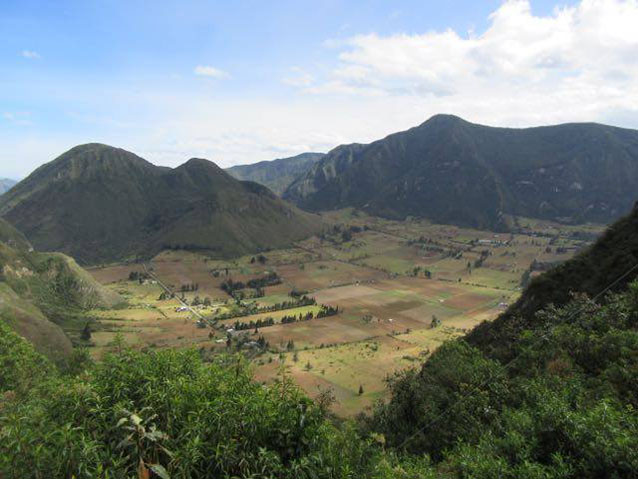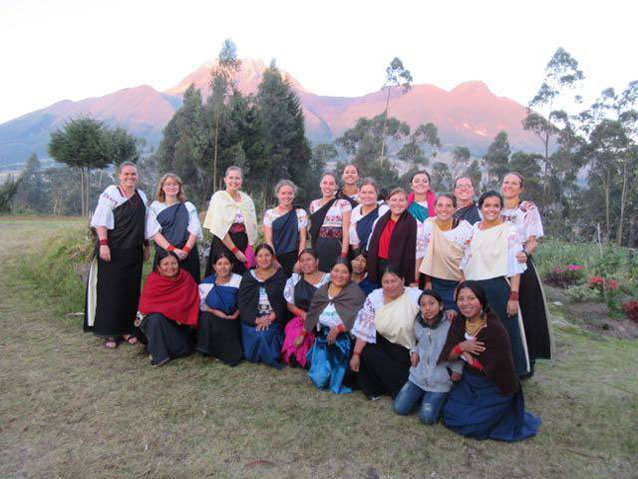Shortly before we visited the indigenous community of Agato, near Otavalo, Ecuador, we headed to a moderately large outdoor market, where I tried pigeon. I (due to a miscommunication) thought that this was a guinea pig, but sadly, was mistaken. Fruits, grains, clothing, shoes, and household linens covered booths and tables, and men and women chanted “scarves” or “beans”- in Spanish of course – to advertise their goods for sale. The market was almost divided into sections, clothing in one quadrant, food in another, and sugar and grains nearby. People were happy about bargaining for items, and most were even willing to put up with my broken Spanish to barter for a lower price. Small children ran around looking at toys and mothers chatted holding up beautifully woven scarves. As I walked by a rice vendor, he threw a small handful of rice at me to get my attention, which he successfully did. I was almost enchanted by the feel of the market, so lively and brightly colored. The time in the market flew by so fast I nearly missed my bus!
The indigenous communities of Andean highlands differ greatly from the ever-busy city of Quito. The tall swooping hills are quilted together with different agriculture – maize, beans, potatoes; many pigs, cows, and sheep dot the landscape.

The houses are modest, and dogs nap on the porches of many. In contrast to the proximity of buildings in the city, the rural areas of Ecuador in the high Andes have room for animals to graze and for children to play. The people of the Agato Community welcomed us with open arms. This was my favorite part of the trip, as well as the farthest from my comfort zone.
As an anthropologist, my job and biggest passion, is to learn about new cultures and to meet people from all over the globe. I hope to work one day as an environmental anthropologist in South or Central America, and visiting the Agato community made that desire burn even brighter. This trip was my first time actually doing field work, especially in a country that does not share the same language as I speak. As excited as I was stepping off the bus into the Agato community, I was equally terrified! After we met up as a group, we split off into our host families. I had the chance to stay with Jaime and his wife and two daughters, who all were brilliant musicians. Their home was simple, and clean, and I knew that they were especially thankful for what they had.
We spent several days in the Agato village learning about the rural community and their traditional ways of life. The goal of the community organization we were working with was to preserve the rich Kichwa culture of their people that have lived in this area for many years.
This photo at the top of this post is a picture of all the women, both from the US and Ecuador, posing together in indigenous clothing. Our “mothers” dressed us up before we had a grand party with music and dancing. They wanted us to wear their indigenous clothing so that we could get an insider view on their lives, and really feel the spirit of their people. We gathered in their meeting hall and danced in big circles around musicians, for what seemed like an hour, and they began to pour us alcohol shots (which we had to finish before we could stop dancing). This photo belongs to a collection of many photos taken that night of the party and our host families we stayed with.
At this point though, I can say that the trip to visit the people of Ecuador has been one of the most fulfilling endeavors I have been a part of. Though the language made communication a bit tricky, and the food was different than I am used to, I cannot wait to return to the colorful and culturally rich community that is Ecuador.
Note: Maddie Harrison has also compiled a video of the entire trip. to access the video.


